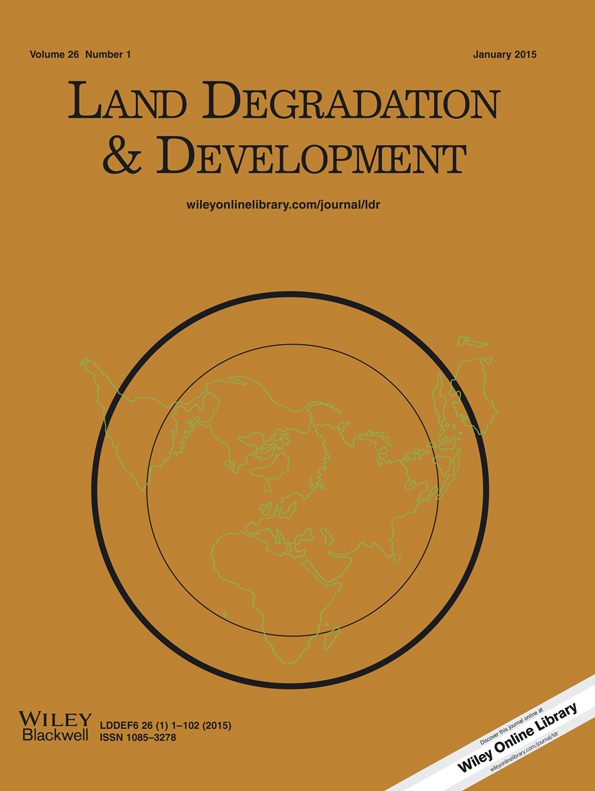Ver ítem
- xmlui.general.dspace_homeCentros Regionales y EEAsCentro Regional La Pampa - San LuisEEA San LuisArtículos científicosxmlui.ArtifactBrowser.ItemViewer.trail
- Inicio
- Centros Regionales y EEAs
- Centro Regional La Pampa - San Luis
- EEA San Luis
- Artículos científicos
- Ver ítem
The impact of agriculture on soil texture due to wind erosion
Resumen
Wind erosion produces textural changes on topsoil of semiarid and arid environments; however, the selection of particles on different textured soils is unclear. Our objectives were to evaluate textural changes induced by wind erosion on cultivated soils of different granulometry and to asses if textural changes produced by wind erosion are linked to aggregation of granulometric particles into different sizes of aggregates formed in contrasting textured
[ver mas...]
Wind erosion produces textural changes on topsoil of semiarid and arid environments; however, the selection of particles on different textured soils is unclear. Our objectives were to evaluate textural changes induced by wind erosion on cultivated soils of different granulometry and to asses if textural changes produced by wind erosion are linked to aggregation of granulometric particles into different sizes of aggregates formed in contrasting textured soils. Considering this, we studied the particle size distribution (PSD) with full dispersion (PSDF) of 14 cultivated (CULT) and uncultivated (UNCULT) paired soils and, on selected sites, the PSD with minimum dispersion (PSDMIN) and the quotient PSDMIN/F. Results showed that the content of silt plus clay was lower in CULT than in UNCULT in most of the sites. The highest removal of silt was produced in soils with low sand and high silt content; meanwhile, the highest removal of clay was observed in soils with medium sand content. According to PSDMIN, particles of 250–2,000 μm predominated in the sandy soil, in the loamy soil particles between 50 and 250 μm and in the silty loam soil particles between 2 and 50 μm. For clay sized particles, PSDMIN/F was lower than 1 in all soils and managements, but this quotient was higher in CULT compared with UNCULT only in the loamy soil. This means a decrease of clay accumulation in aggregates of larger sizes produced by agriculture, which indicates an increase in the risk of removal of these particles by wind in loamy soils
[Cerrar]

Fuente
Land degradation and development 26 (1) : 62-70. (January 2015)
Fecha
2015-01
ISSN
1085-3278
1099-145X
1099-145X
Formato
pdf
Tipo de documento
artículo
Palabras Claves
Derechos de acceso
Restringido
 Excepto donde se diga explicitamente, este item se publica bajo la siguiente descripción: Creative Commons Attribution-NonCommercial-ShareAlike 2.5 Unported (CC BY-NC-SA 2.5)
Excepto donde se diga explicitamente, este item se publica bajo la siguiente descripción: Creative Commons Attribution-NonCommercial-ShareAlike 2.5 Unported (CC BY-NC-SA 2.5)

